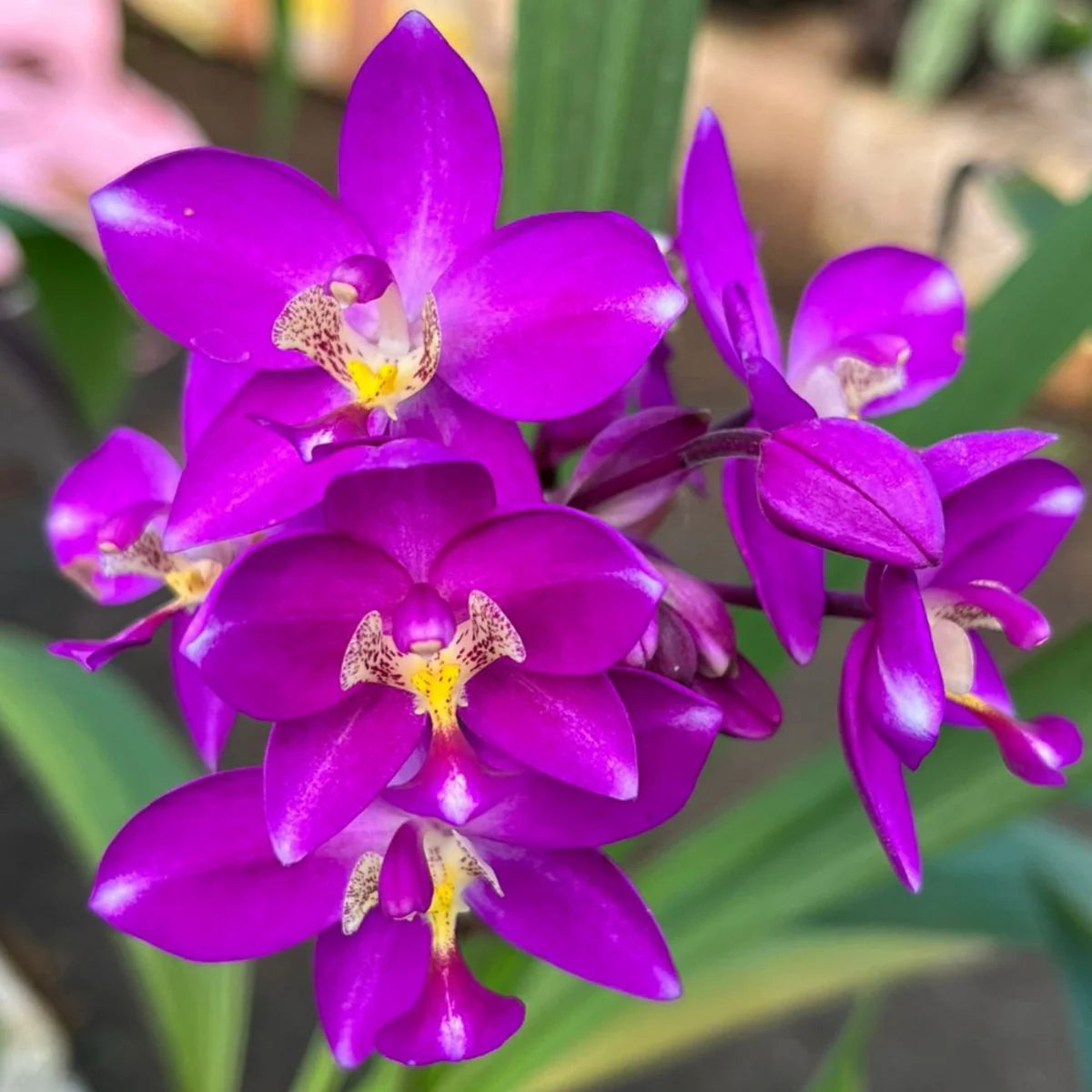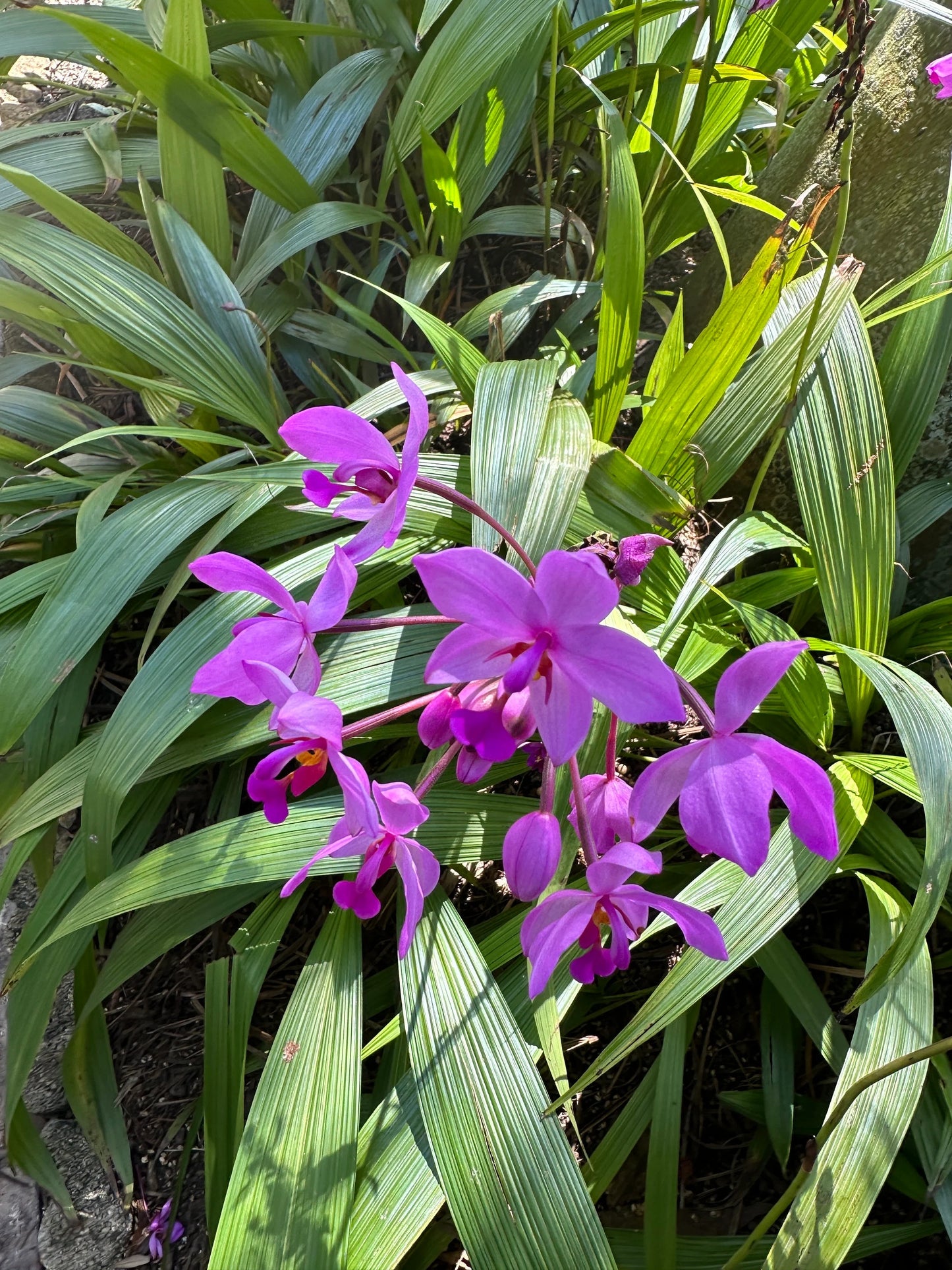Kalapana Orchid Farm
*New* Purple Ground Orchid
*New* Purple Ground Orchid
Couldn't load pickup availability
The Ground Orchid, Spathoglottis plicata, is often called the Philippine Ground Orchid, and for good reason – it's a wonderfully easy-going terrestrial orchid that prefers its roots nestled in the soil, unlike many of its epiphytic cousins that cling to trees. This makes it a fantastic choice for those who want that exotic orchid flair without the fuss of mounting or special baskets.
Spathoglottis plicata hails from a wide range across tropical and subtropical Asia to Australia and the western Pacific, including places like Taiwan, India, Malaysia, the Philippines, and even Hawaii where it has naturalized in some areas. You'll find it growing happily in moist spots in forests, grasslands, and even swamps, from sea level up to a few thousand feet. It’s certainly no mountain climber, preferring the warmth and consistent moisture of the lowlands.
Now, about the flower! The Spathoglottis plicata is known for its prolific blooms. When we talk about the purple/lavender forms, you're looking at a flower that typically ranges from a rich magenta to a softer lavender-purple. The individual flowers are star-shaped, measuring about 1.5 to 2 inches across, and they emerge on tall, erect spikes that can reach up to 3 feet in height. Each spike can carry anywhere from a handful to a few dozen flowers, opening a few at a time from the bottom up, providing a continuous display for months, especially in warmer climates. Look closely, and you'll often see a lovely yellow or orange callus on the labellum (that's the orchid's lip) which creates a striking contrast against the purple petals. While not overtly fragrant, some folks report a very faint, pleasant scent, particularly on warm days.
Botanically speaking, this is an evergreen, terrestrial herb that forms clumps. Its pseudobulbs are crowded, ovoid, and shallowly subterranean, giving rise to its charmingly pleated, lanceolate leaves. These leaves are quite impressive themselves, reaching lengths of 20 to 36 inches and widths of 3 to 6 inches, with distinct parallel veins that give them a textured, almost folded appearance. The flower spikes arise from the base of these pseudobulbs. After flowering, the plant produces cylindrical, ribbed capsules that hold its abundant seeds.
Care Instructions
Light: Bright, indirect light is ideal. It can tolerate some direct morning sun, but avoid harsh, hot afternoon sun which can scorch the leaves. Partial shade is also acceptable, though flowering may be less prolific.
Water: Keep the potting medium consistently moist, but not waterlogged. Water thoroughly when the top 1 to 2 inches of the medium feel dry to the touch. Ensure good drainage to prevent root rot. Reduce watering slightly during cooler, less active periods.
Temperature: Thrives in warm temperatures, ideally between 65°F to 85°F. It can tolerate temperatures down to 50°F, but prolonged exposure to cold can cause stress. Protect from frost.
Humidity: Prefers moderate to high humidity, ideally 50% to 70%. In drier environments, consider using a humidity tray or grouping plants to increase local humidity.
Potting Medium: A well-draining, moisture-retentive potting mix is crucial. A good mix would include garden soil amended with organic matter such as peat moss, perlite, and coarse sand or fine bark. Terrestrial orchid mixes are also suitable.
Share




